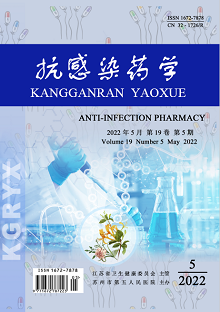LIANG Jing, LIU Shan-shan, JI Yan-ping
Objective: To analyze the microbial culture and drug resistance changes of inpatients in the Emergency Department of a hospital, and provide reference for the rational use of antibacterials. Methods: The medical records of 2 051 patients who were admitted to the Emergency Department of Dongli District Hospital of Traditional Chinese Medicine and underwent the microbial culture from 2015 to 2019 were collected, and the statistics and analysis of the distribution of pathogenic bacteria and drug resistance changes of major pathogenic bacteria in the inpatients of the Emergency Department over the years, as well as the clinical features of patients with Klebsiella pneumoniae infection were conducted. Results: A total of 3 387 strains of pathogenic bacteria were isolated from the specimens of 2 051 inpatients in the Emergency Department, including 1 805 strains of Gram-negative bacteria (53.29%), 1 141 strains of Gram-positive bacteria (33.69%) and 441 strains of fungi (13.02%); the top 5 bacteria were Acinetobacter baumannii (660 strains), Staphylococcus aureus (436 strains), Klebsiella pneumoniae (347 strains), Pseudomonas aeruginosa (338 strains) and Escherichia coli (237 strains); the drug susceptibility test results showed that, from 2015 to 2019, the drug resistance rate of Klebsiella pneumoniae to cefoperazone-sulbactam sodium, imipenem, amikacin and ciprofloxacin increased dramatically, and the drug resistance rates of Acinetobacter baumannii, Pseudomonas aeruginosa and Escherichia coli to cefoperazone-sulbactam sodium increased dramatically, but the drug resistance rates of Acinetobacter baumannii, Klebsiella pneumoniae and Escherichia coli to minocycline decreased dramatically; over the 5 years, the drug resistance rate of Staphylococcus aureus to vancomycin, linezolid, and tigecycline was always low (less than 5.00%), and the drug resistance rate of Staphylococcus aureus to levofloxacin and tetracycline decreased dramatically, but still relatively high (greater than 40.00%); the incidence of Klebsiella pneumoniae infection was higher (greater than 65.00%) in patients at or above 60 years old with deep venous catheters or indwelling catheters. Conclusion: Acinetobacter baumannii, Staphylococcus aureus, Klebsiella pneumoniae, Pseudomonas aeruginosa and Escherichia coli are the main bacteria detected in the inpatients of the Emergency Department of the hospital, and these 5 bacteria show strong drug resistance. Of which, the drug resistance of Klebsiella pneumoniae shows an obvious increasing trend in the past 5 years. The hospital should strengthen the detection of pathogenic bacteria and their drug resistance monitoring, so as to develop more scientific and reasonable anti-infective therapy regimens for clinical practices.
